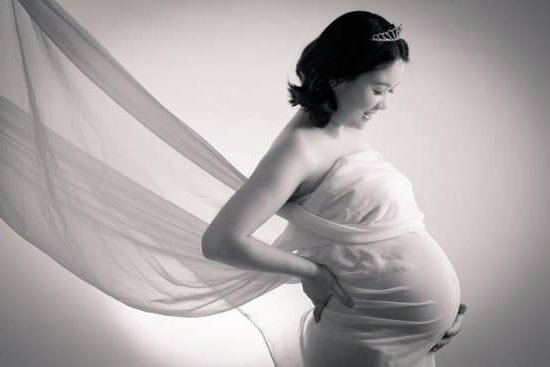What does spotting look like in early pregnancy pictures? Spotting is a common occurrence in the early stages of pregnancy, but many women may be unsure of what to expect.
In this article, we will delve into the topic of spotting in early pregnancy, exploring its causes, accompanying symptoms, and when it should be a cause for concern. Additionally, we will discuss how to differentiate between spotting and normal bleeding, as well as provide tips for taking pictures of spotting for reference.
Spotting in early pregnancy refers to light vaginal bleeding that occurs during the first trimester. It can vary in color from pink to red or brown and may come and go intermittently. While it is typically not as heavy as a menstrual period, spotting can still cause concern for expectant mothers. Understanding what spotting looks like in early pregnancy pictures can help women recognize this common occurrence and differentiate it from more serious issues.
There are several potential causes of spotting in early pregnancy, including implantation bleeding, hormonal changes, cervical irritation, or even infections. It is important to note that while spotting is often harmless, there are instances where it could indicate a more serious issue such as an ectopic pregnancy or miscarriage.
By being aware of the signs of concern during early pregnancy spotting and seeking medical attention when necessary, expectant mothers can ensure their health and the well-being of their unborn child.
What Is Spotting in Early Pregnancy?
Spotting in early pregnancy refers to light bleeding or pinkish discharge that occurs during the first trimester. It is a common occurrence and can be a cause of concern for many expecting mothers. Understanding what spotting looks like in early pregnancy pictures can help differentiate between normal vaginal bleeding and potential issues that may require medical attention.
Characteristics of Spotting
Spotting in early pregnancy is typically characterized by light bleeding that is lighter than a regular menstrual period. The blood may appear pink, brown, or even red, and it may only be enough to warrant wearing a panty liner. It is usually intermittent and not as heavy as a normal period. In some cases, spotting can be accompanied by mild cramping or abdominal discomfort.
Duration of Spotting
Spotting in early pregnancy can last for a few hours to a few days, depending on the underlying cause. It is important to pay attention to the duration and frequency of spotting, as prolonged or heavy bleeding could indicate more serious issues such as an ectopic pregnancy or miscarriage. Keeping track of when the spotting started and how long it lasts can provide valuable information for healthcare providers when assessing your condition.
Causes of Spotting in Early Pregnancy
Spotting in early pregnancy can be a cause of concern for many expectant mothers, leading them to wonder what does spotting look like in early pregnancy pictures. Understanding the various causes of spotting can help alleviate some anxiety and provide clarity during this delicate time. Below is a list of common reasons why spotting may occur in early pregnancy:
- Implantation Bleeding: This occurs when the fertilized egg attaches itself to the lining of the uterus, usually around 6-12 days after conception. The bleeding is typically light and may be accompanied by mild cramping.
- Cervical Changes: Increased blood flow to the cervix during pregnancy can cause it to become more sensitive, leading to occasional spotting. This is often seen after intercourse or a pelvic exam.
- Hormonal Changes: Fluctuations in hormone levels, particularly progesterone, can result in light spotting during early pregnancy. These hormonal shifts are necessary for maintaining a healthy pregnancy but can also lead to minor bleeding.
It’s important for pregnant individuals to keep in mind that while spotting can be normal in early pregnancy, there are certain symptoms that may signal a more serious issue. Understanding these warning signs can help differentiate between harmless spotting and potential complications:
- Heavy bleeding with clotting
- Severe abdominal pain or cramping
- Dizziness or fainting
If you experience any of these symptoms along with spotting, it is crucial to seek medical attention promptly. Monitoring your body’s signals and being aware of potential red flags can help ensure the health and well-being of both you and your baby during early pregnancy.
Symptoms Accompanying Spotting
Spotting in early pregnancy can be accompanied by various symptoms that may provide insight into the underlying cause. It is important to pay attention to these signs and communicate them to your healthcare provider for proper evaluation and guidance. Some of the common symptoms that may be experienced alongside spotting in early pregnancy include:
- Cramping: Mild cramping or abdominal discomfort can often occur with spotting in early pregnancy. This is typically due to the stretching of the uterine muscles as the embryo implants and the uterus expands.
- Back Pain: Some women may experience mild to moderate lower back pain along with spotting. This can be attributed to hormonal changes and the developing pregnancy affecting the muscles and ligaments in the back.
- Changes in Breast Sensitivity: The hormonal shifts in early pregnancy can lead to increased sensitivity or tenderness in the breasts. This symptom may intensify when coupled with spotting.
It is important to note that not all women will experience these symptoms, and some individuals may have different accompanying signs during early pregnancy spotting. Additionally, every woman’s body responds differently, so it is essential to listen to your own body and seek medical advice if you have any concerns.
In cases where symptoms such as severe abdominal pain, heavy bleeding, dizziness, or fainting accompany spotting, seeking immediate medical attention is crucial. These could be signs of complications like ectopic pregnancy or miscarriage that require prompt intervention. Remember that timely communication with your healthcare provider is key in ensuring a healthy outcome for you and your baby during the early stages of pregnancy.
When to Worry
Spotting during early pregnancy can be a cause of concern for many expectant mothers, as it may indicate underlying issues. While spotting is common and usually harmless in the first trimester, there are certain signs to watch out for that could signal complications. It is crucial for pregnant women to be aware of these warning signs and seek medical advice promptly if they experience any of them.
Signs of Concern
One major red flag during early pregnancy spotting is heavy bleeding or passing of blood clots. This can be an indication of a potential miscarriage or ectopic pregnancy, both of which require immediate medical attention. Likewise, if the spotting is accompanied by severe abdominal pain or cramping, it could suggest a more serious problem that needs to be addressed by a healthcare provider. Any combination of these symptoms should not be ignored, and prompt evaluation by a doctor is essential.
Unusual Discharge
In some cases, spotting accompanied by unusual discharge such as foul odor or greenish tint could point towards an infection. Infections during pregnancy can be harmful not only to the mother but also to the developing fetus. Therefore, any changes in the color, odor, or consistency of vaginal discharge should be reported to a healthcare provider promptly for appropriate treatment. Ignoring such signs could lead to complications that might affect the pregnancy.
Persistent Spotting
While occasional light spotting may not always indicate a problem, persistent spotting over several days should raise concerns. Continuous spotting throughout the first trimester could indicate conditions like threatened miscarriage or problems with the cervix. It is crucial for expectant mothers experiencing prolonged spotting to consult their obstetrician for evaluation and monitoring. Regular check-ups and assessments can help identify any issues early on and prevent potential complications later in pregnancy.
How to Differentiate Between Spotting and Normal Bleeding
Spotting in early pregnancy can often be a cause of concern for many expectant mothers. It is essential to differentiate between spotting and normal bleeding to ensure the health and well-being of both the mother and the unborn baby. So, what does spotting look like in early pregnancy pictures? Spotting typically appears as light pink or brown discharge, sometimes accompanied by mild cramping.
It is important to note that spotting is usually very light and does not resemble a regular menstrual period. Normal bleeding during pregnancy tends to be heavier, bright red in color, and may come with clots. If you are unsure whether you are experiencing spotting or normal bleeding, it is always best to consult with your healthcare provider for guidance and reassurance.
To differentiate between spotting and normal bleeding, keep track of the amount and color of the blood. Spotting usually involves only a small amount of blood that may not even require a pad. Additionally, pay attention to any accompanying symptoms like cramping or abdominal pain. If you experience heavy bleeding, severe pain, or any other worrying symptoms, seek medical help immediately as these could indicate a more serious issue.
Tips for Taking Pictures of Spotting in Early Pregnancy
When it comes to documenting spotting in early pregnancy, taking pictures can be a helpful way to monitor the situation and provide valuable information to healthcare professionals. But what does spotting look like in early pregnancy pictures? Spotting in early pregnancy can vary in appearance, ranging from light pink or brown discharge to bright red bleeding. It is important to capture the true color and texture of the spotting as accurately as possible in photos.
One tip for taking pictures of spotting in early pregnancy is to use proper lighting. Natural light is always best, so try taking photos near a window during the day. This will help ensure that the colors appear true to life. It’s also important to take close-up shots to capture any details or changes in the spotting. Additionally, using a clean white background can provide a clear contrast for the spotting in the photos.
Another important tip is to document any accompanying symptoms along with the spotting in early pregnancy pictures. This could include cramping, abdominal pain, or any other discomfort you may be experiencing. Providing as much information as possible through both photos and notes can help healthcare providers make an accurate assessment of your condition. Remember to keep your photos organized and dated for easy reference throughout your pregnancy journey.
Lastly, consider seeking guidance from your healthcare provider on what specific details they would like you to capture in the pictures of spotting in early pregnancy. They may have specific instructions or preferences based on your individual situation. By following these tips and guidelines, you can effectively track and monitor any spotting during early pregnancy for better medical advice and care.
| Tip for Taking Pictures of Spotting | Importance |
|---|---|
| Use proper lighting | Ensures accurate color representation |
| Document accompanying symptoms | Helps healthcare providers assess your condition |
| Seek guidance from healthcare provider | Receive specific instructions for your situation |
Gallery
Spotting in early pregnancy can be a cause of worry for many expectant mothers. It is important to understand what spotting looks like in early pregnancy pictures in order to differentiate between normal bleeding and potentially concerning issues. Spotting is typically described as light bleeding that may be pink, red, or brown in color. It is usually much lighter than a regular menstrual period and may only require the use of a panty liner.
When trying to identify what spotting looks like in early pregnancy pictures, it is important to consider the timing and amount of blood. Spotting may occur around the time of implantation, which happens about 6-12 days after conception.
This type of spotting will likely be minimal and not enough to fill a pad. Additionally, if the spotting is accompanied by any pain, cramping, or unusual discharge, it could be a sign of a more serious issue such as an ectopic pregnancy or miscarriage.
To capture pictures of spotting during early pregnancy, it is essential to use proper lighting and focus on the area where the spotting is occurring. Close-up shots can help provide a clearer image for analysis. However, it is crucial to consult with a healthcare provider before attempting to take pictures of any vaginal bleeding during pregnancy. Seeking medical advice promptly can ensure proper diagnosis and treatment if necessary.
In our gallery of real-life early pregnancy spotting pictures, you can see firsthand examples of what spotting may look like during early pregnancy. These images can serve as helpful references for expectant mothers who are unsure about whether they are experiencing normal spotting or something more concerning. Remember that every woman’s experience with spotting in early pregnancy can vary, so always seek guidance from a healthcare professional if you have any doubts or concerns.
Conclusion
Spotting during early pregnancy is a common concern for many expecting mothers. It can be a sign of various factors, from implantation bleeding to more serious complications. Understanding what spotting looks like and the potential causes can help alleviate anxieties and ensure that you take the necessary steps to monitor your health during this critical time.
In conclusion, it is crucial for pregnant individuals to keep track of any spotting they may experience throughout their pregnancy. By documenting the frequency, color, and amount of spotting, you can provide valuable information to your healthcare provider to assess your pregnancy’s progress accurately. Additionally, keeping a record of spotting can help you identify any unusual patterns or changes that may require medical attention promptly.
Remember, every pregnancy is unique, and what may be considered normal spotting for one person may not be the same for another. If you have any concerns or notice any unusual symptoms accompanying the spotting, do not hesitate to consult with your doctor or midwife.
Early intervention and monitoring can make all the difference in ensuring a healthy pregnancy journey for both you and your baby. So remember to stay informed, stay vigilant, and prioritize your health throughout this remarkable stage of life.
Frequently Asked Questions
What Does Spotting at Beginning of Pregnancy Look Like?
Spotting at the beginning of pregnancy can vary from person to person, but it is usually light pink or brown discharge. It is much lighter than a regular period and doesn’t typically last as long.
How Do I Know if I’m Spotting Because I’m Pregnant?
To know if you’re spotting because you’re pregnant, consider any other symptoms you may be experiencing such as breast tenderness, nausea, fatigue, or a missed period. Taking a pregnancy test can also confirm whether spotting is due to pregnancy.
When Does Pregnancy Spotting Start?
Pregnancy spotting can start as early as 6-12 days after conception when the fertilized egg implants in the uterus. This is known as implantation bleeding and is often mistaken for a light period. However, it’s important to consult with a healthcare provider for confirmation.

Welcome to my fertility blog. This is a space where I will be sharing my experiences as I navigate through the world of fertility treatments, as well as provide information and resources about fertility and pregnancy.





